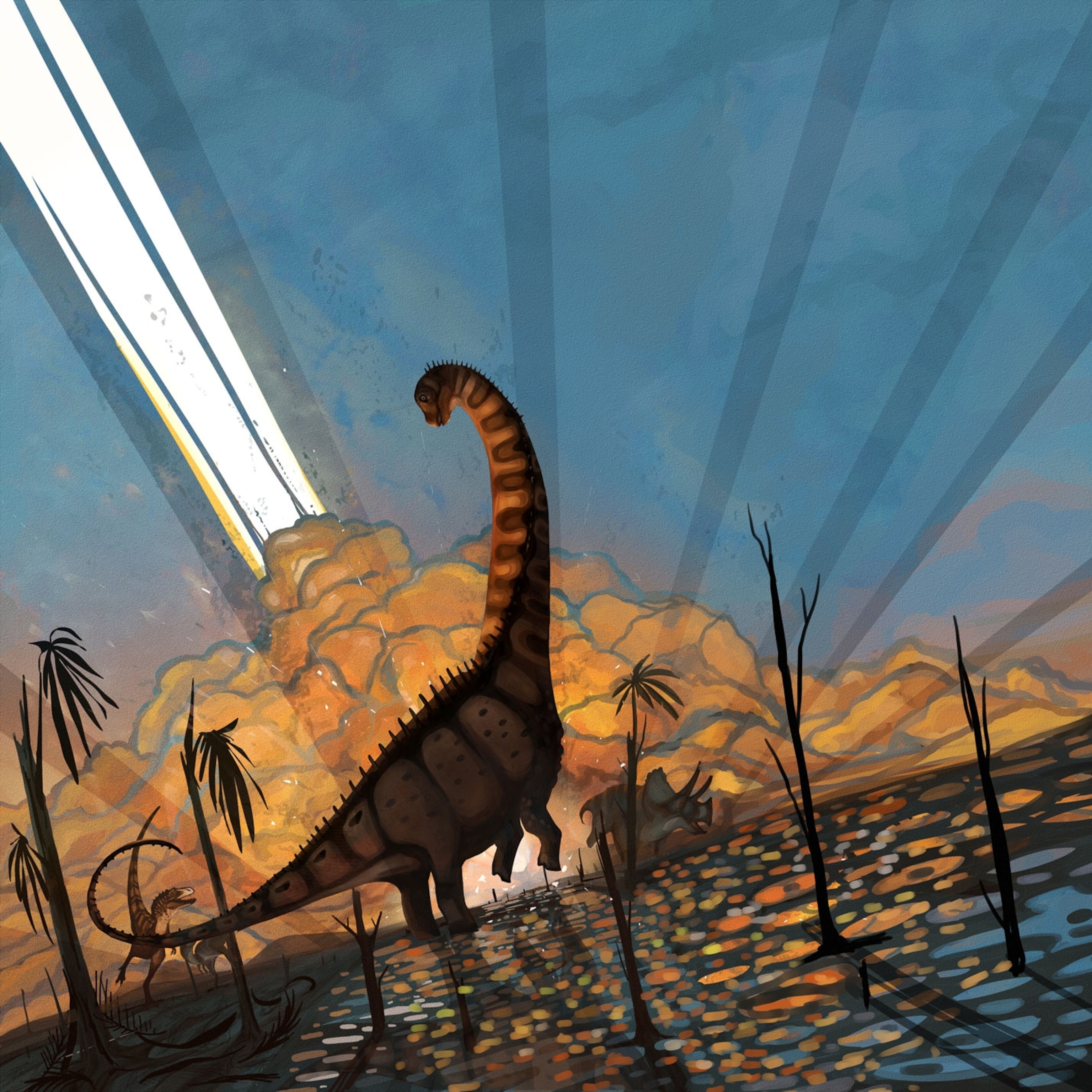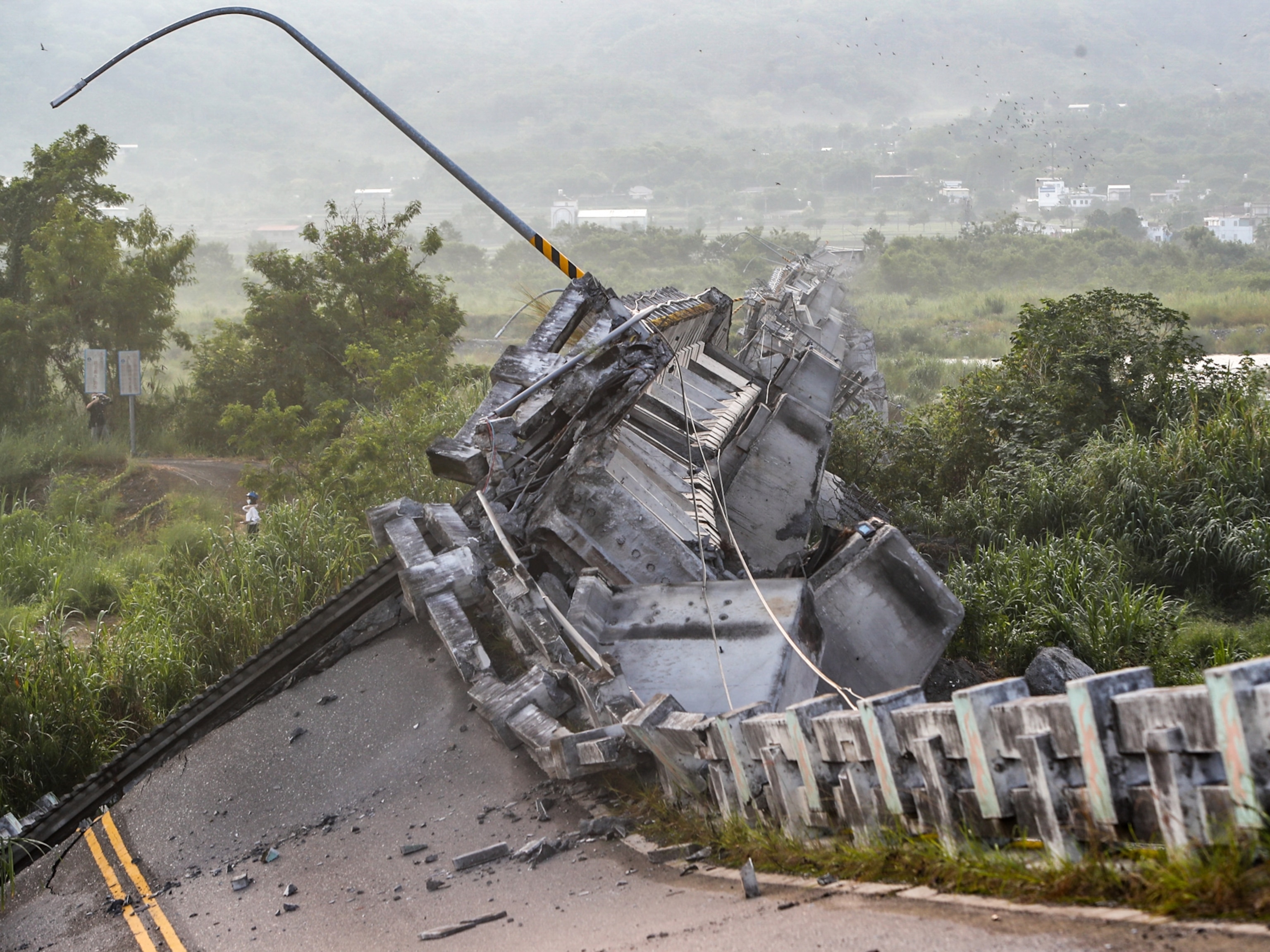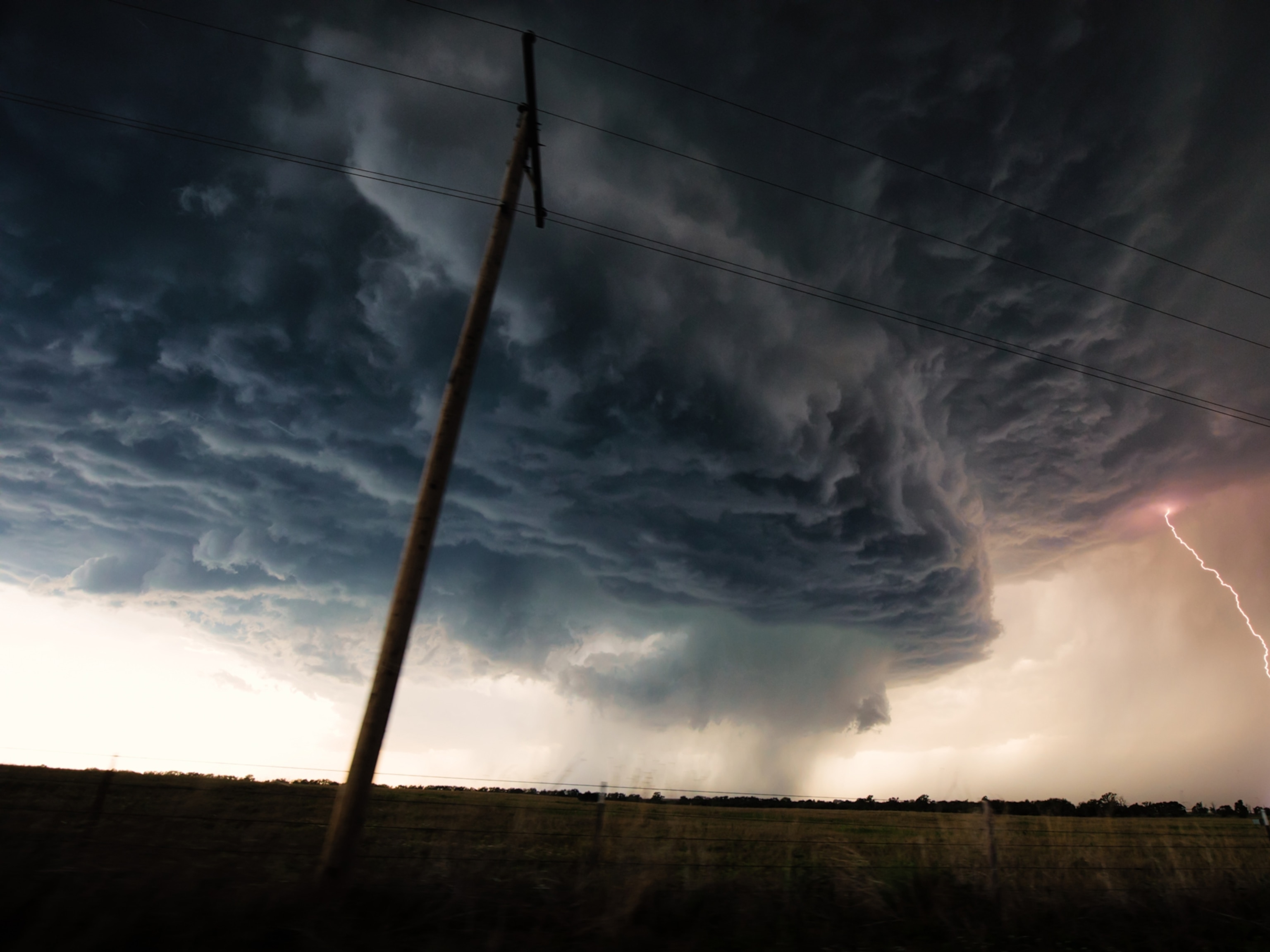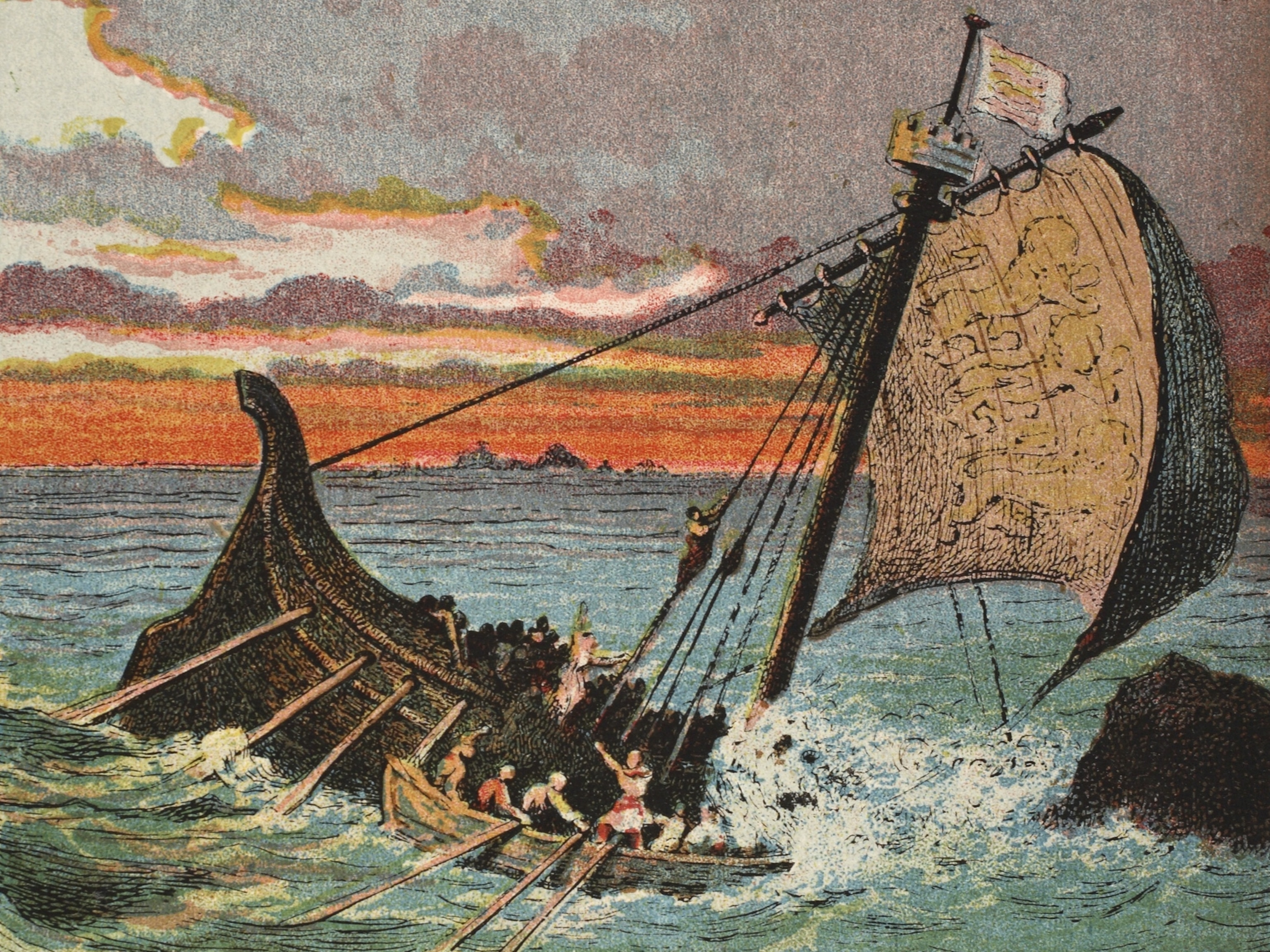Remember when NASA crashed into an asteroid? It had some unintended consequences.
Humanity's first practice attempt at saving the world from a killer asteroid was a smashing success—but it created a swarm of debris that has implications for planetary defense.

Images of space tend to inspire awe, but new photographs of an asteroid surrounded by a swarm of boulders hit differently. This cloud of wreckage, flitting around a space rock already adorned with a comet-like tail of dusty matter, was not created by a natural phenomenon—but by a spacecraft that was intentionally crashed into it.
These images from the Hubble Space Telescope show the aftermath of the Double Asteroid Redirection Test (DART), humanity’s first-ever attempt to practice saving the world from a lethal asteroid impact. On September 26, 2022, NASA and the Johns Hopkins University’s Applied Physics Laboratory piloted a partly autonomous, van-sized spacecraft into the asteroid Dimorphos at 14,000 miles per hour, deflecting it and changing its orbit around its more elephantine asteroid parent, Didymos.
The mission’s success demonstrated that, with sufficient warning time, asteroids can be knocked away from the Earth using this technique. Images like these—the most spectacular of which was composed in December 2022—confirm that the DART spacecraft punched way above its weight: It sheared off a cloud of debris that could still be seen in the space around Dimorphos several months after the spacecraft’s demise.
“It’s really, woah,” says Megan Bruck Syal, a planetary defense researcher at the Lawrence Livermore National Laboratory in California and a DART investigation team member. “It provides us intuition for the violence of the event.”
Like Dimorphos itself, none of those 37 boulders—some as large as 22 feet across—are a danger to Earth. Didymos and Dimorphos were chosen for the mission in part because their distant, conjoined orbit around the sun means that they pose no hazard to us, even after their explosive encounter with DART.
The detection of a boulder swarm adds to scientists’ understanding of the world’s first planetary defense test. “We have a better idea of what happens when you hit an asteroid,” says David Jewitt, an astronomer at the University of California, Los Angeles, and lead author of a study that took and examined the Hubble shots.
That these images are also bewitching is a bonus. Upon first seeing them, “I found it hard to believe these were real,” says Jewitt.
Rearranging the cosmos
The planet is enveloped by asteroids—and, occasionally, they plunge into our skies. The world’s asteroid-hunting surveys have found over 32,000 near-Earth asteroids, including most of those big enough to wipe out billions of people and animals and bring civilization crashing down: the planet killers.
But the so-called city killers—460-foot rocks that have the potential to destroy entire metropolises or cripple small countries—remain mostly hidden. Out of a projected 25,000 near-Earth asteroids of this size, only 10,500 have been identified. These smaller objects reflect less sunlight, making them somewhat stealthy.
Asteroids this size hit Earth once every 20,000 years. That makes your lifetime odds of an impact quite low, but higher than anyone would prefer. And if nothing is done to prevent this, one will inevitably find its way here. Perhaps when that day comes, it will land inconsequentially in the middle of the ocean—but it could hit a city.
Not willing to leave it up to the heavens, NASA and the Applied Physics Laboratory built a kinetic impactor—a spacecraft that hits an asteroid to deflect it—and sent it on a 10-month voyage to modify the orbit of the 525-foot asteroid Dimorphos.
In the weeks after the impact, imagery from various space-based observatories and dozens of ground-based telescopes revealed that the orbit of Dimorphos around Didymos shrank from 11 hours and 55 minutes to 11 hours and 23 minutes—surpassing the minimum requirement for mission success by more than a factor of 25.
The ejection of bouldery debris from the collision isn’t surprising. Pre-impact, Dimorphos was suspected of being a rubble pile: a collection of massive rocks flying in formation, weakly bound by their own frail gravity. “We knew a lot of material was going to fly off,” says Cristina Thomas, a planetary astronomer at Northern Arizona University in Flagstaff and the DART mission’s Observations Working Group lead.
But the images of the aftermath nevertheless proved stunning. LICIACube, a tiny satellite that deployed from DART not long before the larger spacecraft’s death, saw web-like streams of matter arching from the asteroid—and months on, an elongated tail of debris nearly 20,000 miles long lingered.
Don’t break the beast
Jewitt, who is not part of the DART team, led observations with Hubble to try and get as detailed a look at the chaos as possible. In a study recently published in The Astrophysical Journal Letters, he and his co-authors revealed that they spied 37 boulders—ranging in size from three to 22 feet long—slowly sauntering away from the asteroid.
Boulders like this are of no concern. When a 22-foot rock hits Earth—a common occurrence—it burns up harmlessly in the atmosphere. “These are not the particles we’re worried about,” says Thomas.
“We’ve certainly lived through plenty of these and not even noticed,” says Andy Rivkin, a planetary astronomer at the Applied Physics Laboratory and one of the DART mission’s Investigation Team leads.
This boulder swarm, though, does have implications for planetary defense.
There are several ways to stop a killer asteroid. Ideally, you deflect it: Spot it decades in advance, determine how hard you need to hit it, then send a DART-like spacecraft—or, potentially, a nuclear device—to greet it, using an impact or explosion to nudge it off course.
“In a real emergency, we might need to give it a much bigger push,” says Bruck Syal—for example, if the asteroid is especially big, or if we only spot it a few years before it’s slated to hit us.
Fortunately, all this Dimorphosian debris suggests that using a spacecraft to deflect an asteroid of this size and type is more effective than expected. Last December, the DART team revealed that the jettisoned material acted like an ephemeral rocket booster, bolstering the deflection effort.
Another way to stop an Earthbound asteroid is to kill it—vaporize it almost entirely into harmless tiny pieces. Disruption, as it is technically known, may be our only choice (aside from taking the hit and mitigating the damage) if there is no way to deflect it in time. Simulations using nuclear devices show that this can work, but everyone would opt for an earlier deflection attempt if possible.
What you don’t want to do is accidentally turn one projectile into many Earth-impacting objects. That isn’t what happened with Dimorphos—but this scenario could unfold if humanity hits another rubble pile asteroid a bit too aggressively. “It’s like shooting a bullet into a bunch of grapes or something,” says Jewitt.
A successful and safe deflection doesn’t depend on hitting it as hard as you can, but getting to know the enemy—by studying the asteroid’s composition and mechanical properties, ideally up close with a reconnaissance spacecraft—and then prodding it with precision. “Each asteroid we’re going to is going to be a little different,” says Thomas.
Fortunately, in the next few years, we will learn more about plenty of other potentially dangerous asteroids. The next-generation Vera C. Rubin Observatory, currently under construction in Chile, is set to find many more Dimorphos-size rocks—as is the upcoming Near-Earth Object Surveyor, a space-based infrared telescope exclusively designed to find elusive asteroids.
And these Hubble shots won’t be the last we see of Dimorphos. The European Space Agency’s Hera spacecraft—launching next October—will arrive at the asteroid in 2026 to take an extremely close look. While we wait, other astronomers will continue to point their telescopes at the asteroidal ruins, hoping to spy more hidden details.
The DART team have already captured more spectacular imagery of the impact than they dared hope. “But we could not possibly have done it all,” says Thomas, gesturing to these Hubble images. “Having other folks join the ride has been really exciting.”








